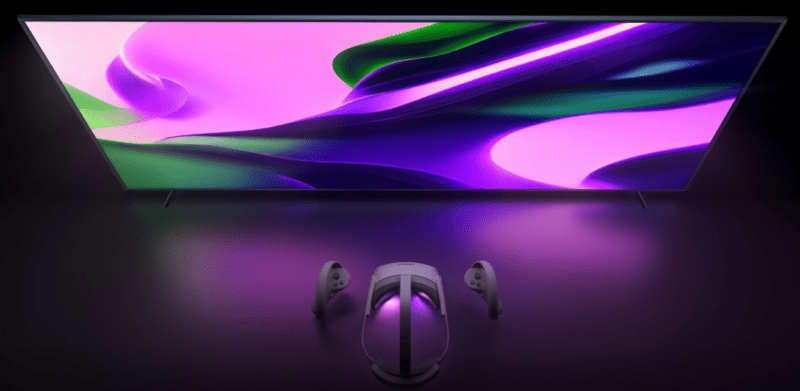“Virtual Visions: Exploring the Exciting Future of VR Casting and Its Applications” delves into the burgeoning field of VR casting, a technology rapidly reshaping various industries. VR casting refers to virtual reality (VR) to simulate environments for training, entertainment, design, and more. This article examines current trends, future innovations, and the potential industry impact of VR casting.
The concept of vr casting isn’t entirely new, but its uses have risen tremendously as VR technology has advanced. Virtual reality casting is a crucial tool in filmmaking, architecture, healthcare, and education industries. In the entertainment industry, for example, filmmakers use VR to create immersive experiences beyond standard screen constraints. This technology enables a more dynamic and engaging storytelling method in which viewers become active participants.
VR casting is changing how professionals view and display their ideas in architecture and design. Architects may develop complex, lifelike models of buildings and spaces, allowing clients to take virtual tours before the start of actual construction. This improves client understanding and happiness and provides for early revisions and enhancements, saving time and resources.
VR casting is also having a significant impact on the healthcare industry. Medical practitioners use VR simulations for surgical training, patient rehabilitation, and therapy. These programs provide a secure and controlled environment for learning and performing difficult operations, dramatically lowering the hazards involved with direct patient care during training.
VR casting is opening new options for immersive learning in education. Students can learn from historical recreations to scientific simulations in a more engaging and participatory environment. This technology makes abstract concepts concrete, promoting a better grasp and retention of information.
The increasing accessibility of VR casting is one of the most significant trends in the industry. VR casting is becoming more widespread as more affordable VR headsets and user-friendly software become available, allowing smaller enterprises and educational institutions to utilize this technology. This democratization will likely encourage innovation as more people can experiment and create in the VR realm.
Looking ahead, some intriguing innovations for VR casting are on the horizon. The merging of augmented reality (AR) and mixed reality (MR) technologies is one of the most anticipated. These developments will merge the virtual and physical worlds, creating more immersive and interactive experiences. Consider a scenario in which an architect not only displays a virtual model of a structure but also uses AR to overlay it on the actual construction site. The potential for mixed-reality applications is enormous, spanning various fields and industries.
Another interesting area of research is enhancing haptic feedback and sensory inputs in virtual reality environments. As VR technology advances to include more accurate tactile sensations, the VR casting experience will become even more lifelike. This has far-reaching consequences for training simulations, where the ability to feel and handle objects precisely is critical.
Furthermore, the increasing use of AI in VR casting is expected to improve the realism and adaptability of VR experiences. AI algorithms can generate dynamic, responsive environments that respond in real-time to user activities. As a result of the VR environment’s ability to adapt to the user’s demands and responses, training and learning experiences will be more personalized and effective.
Beyond the previously explored realms, VR casting is poised to change how we interact with digital marketing and e-commerce. Consider putting on items in a virtual store or seeing how a piece of furniture would look in your living room using virtual reality. This technology can convert online buying into a more engaging and personalized experience. Retailers are starting to experiment with virtual reality (VR) to provide customers with a one-of-a-kind, immersive shopping experience, bridging the gap between physical and online retail environments.
Furthermore, virtual reality casting can substantially impact the travel and tourist business. Virtual tours of locations, hotels, and attractions give potential travelers a taste of what to expect, allowing them to make more educated travel selections. This is especially important in today’s environment since travel limitations and safety concerns may limit physical travel. VR casting allows people to see the world from the comfort of their homes, offering new opportunities for remote tourism.
VR casting is a new technology in sports training and entertainment. Athletes can use virtual reality simulations to refine their talents, strategize, and prepare for tournaments by immersing themselves in various scenarios and conditions. VR allows fans to enjoy athletic events in new ways, delivering immersive views from multiple perspectives and bringing them closer to the action than ever before. This can potentially reshape sports broadcasting and fan involvement in the future.
The applications of VR casting are vast and varied, extending well beyond the industries mentioned. As technology evolves, it opens up innovative solutions across various sectors. VR casting is at the forefront of a technological revolution, reshaping our interaction with the world and ushering in a new era of digital interaction and immersive experiences. This technology is transforming retail, tourism, sports training, and entertainment industries. We are just beginning to tap into the virtual world’s potential, and as exploration and innovation continue, the future of VR casting holds boundless possibilities, only constrained by our imagination.







![How to Fix Kodi Buffering Issue [5 Working Solutions]](https://www.meritline.com/wp-content/uploads/2018/11/How-to-stop-kodi-buffering-100x70.jpg)
